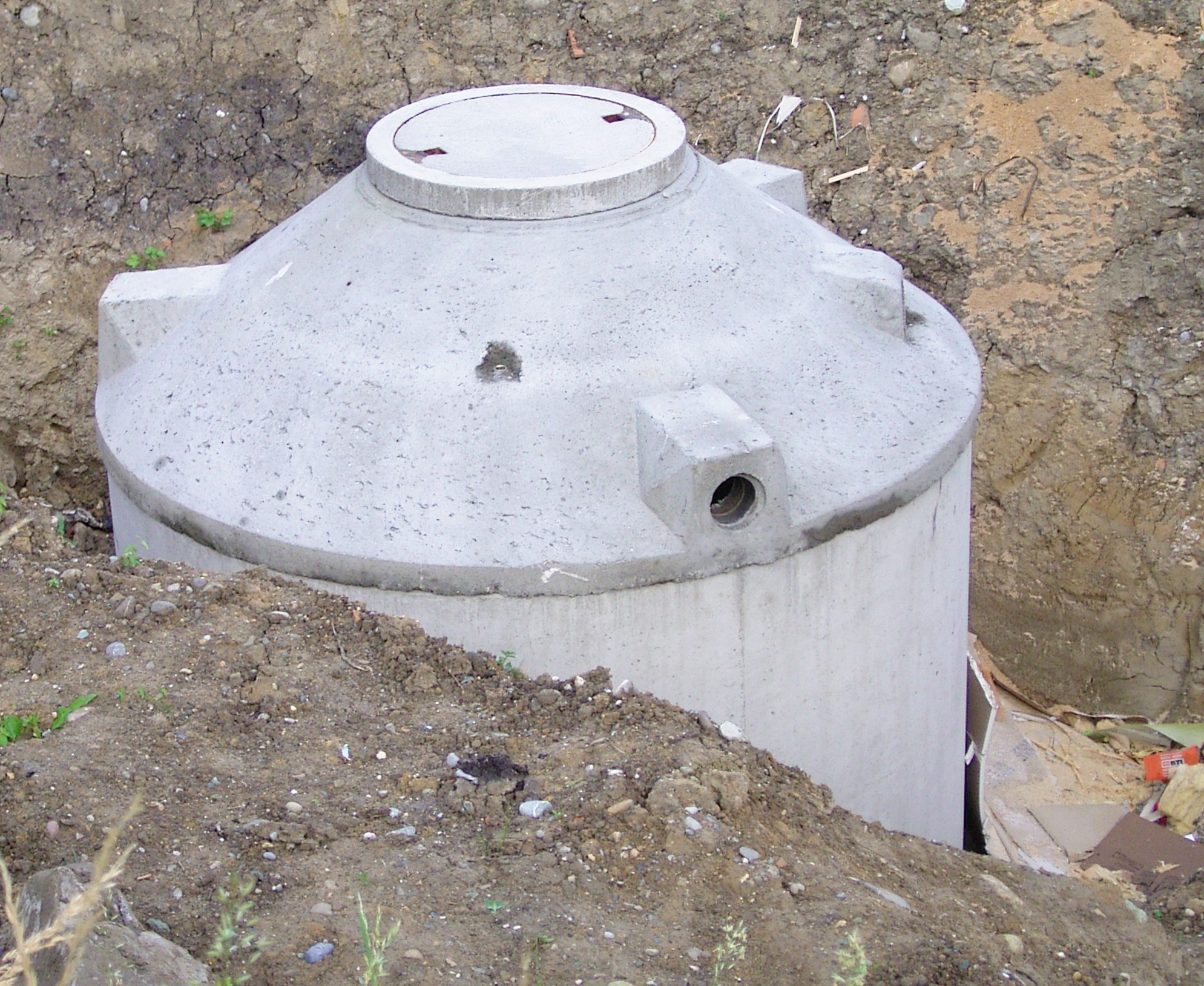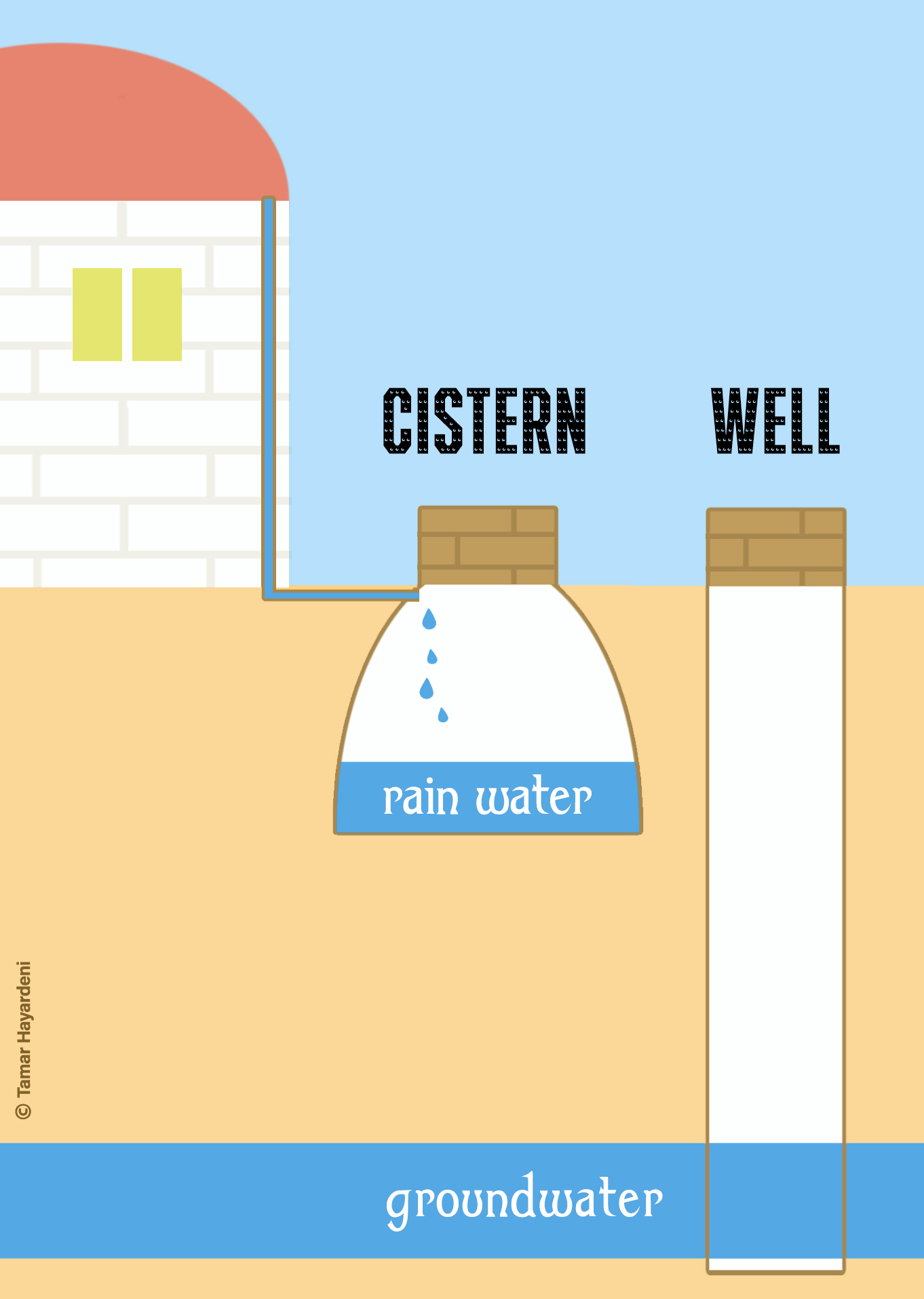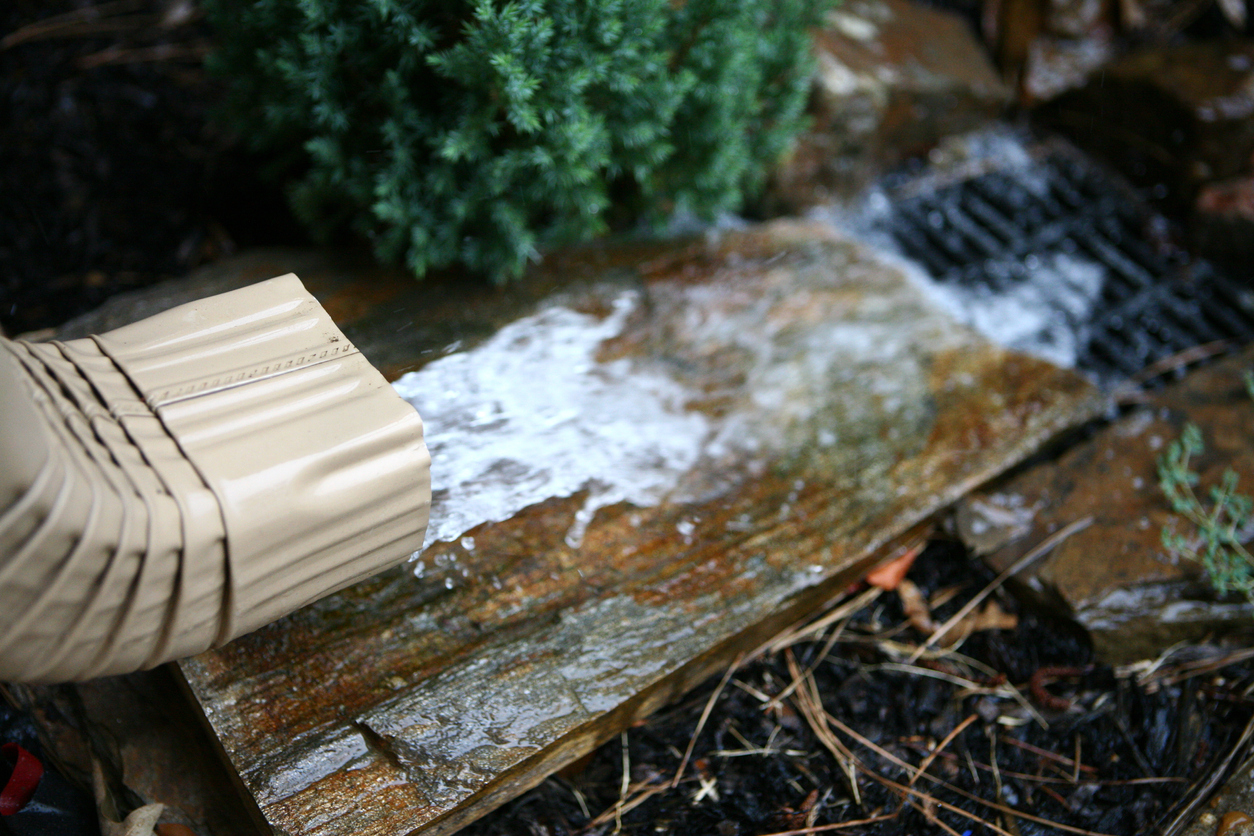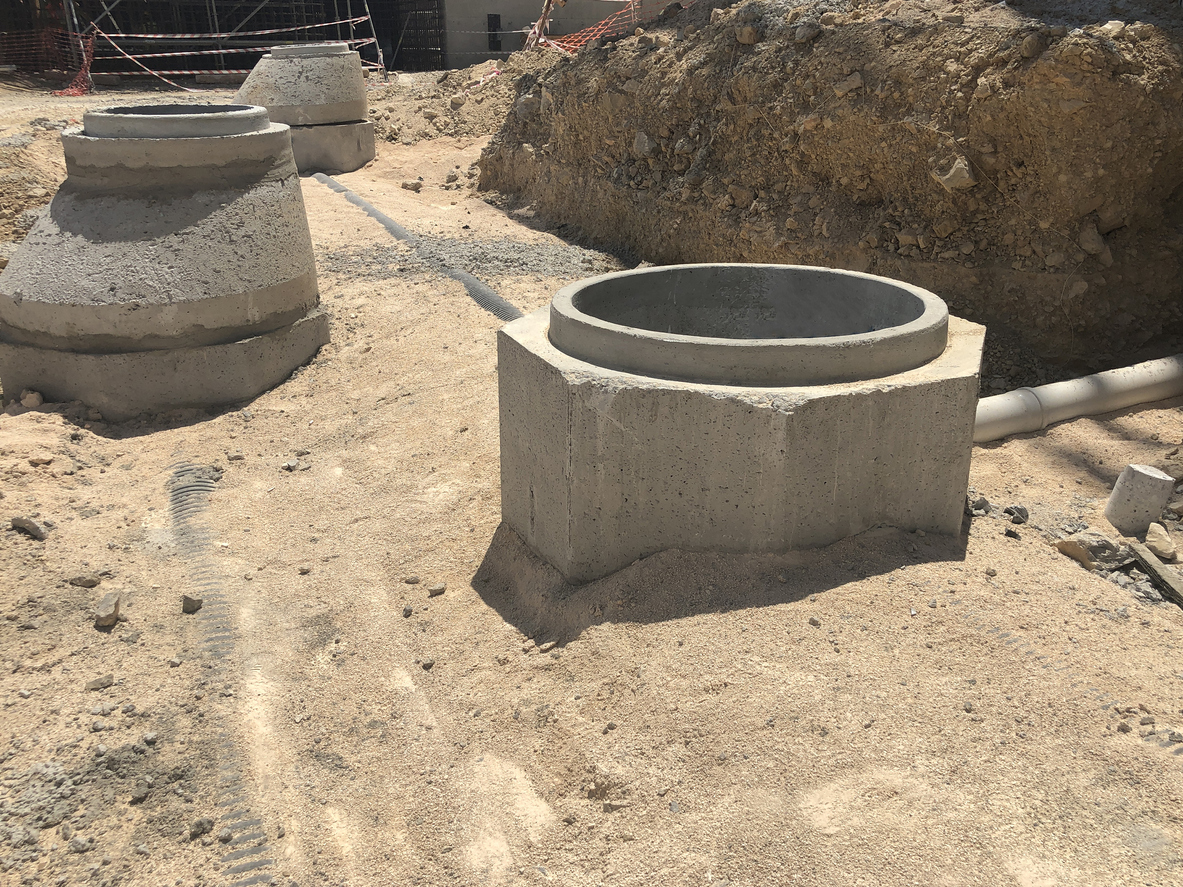We may earn revenue from the products available on this page and participate in affiliate programs. Learn More ›
Q: A house I’m considering buying has a cistern. I know cisterns are used for water collection, but I don’t fully understand the cistern definitions I’ve found online or what a cistern’s benefits are. What is a cistern?
A: Between worsening droughts, extreme temperatures, and high water bills in many places, homeowners are looking for alternative methods to save water and reduce their out-of-pocket costs. Enter cisterns, which allow individuals to collect rainwater for use around the home and garden. They may be a good option in rural areas, regions with frequent droughts or water usage restrictions, and homeowners looking to reduce their water bills and environmental impact.
Below are more detailed answers on what a cistern is, how the water from a cistern can be used, and some considerations to help you decide whether a home with a cistern is right for you.
RELATED: 30 Water-Saving Habits to Start Right Now
A cistern is a reservoir for collecting rainwater for household or garden use.
What is a water cistern? Cisterns collect and store rainwater, allowing individuals to reuse the water for household, gardening, and other uses. How does a cistern work? While that can vary between one system and the next, the general idea is the same. When it rains, rainwater is directed through pipes to the cistern tank. Leaves, dirt, and other debris are stopped by mesh screens in the pipes, ensuring that the water that reaches the tank is as contaminant-free as possible.
Nearly all cistern tanks are installed underground. This is the ideal storage location because temperatures stay more consistent and the water and tank are protected against pests and animals.
An inlet connects to the cistern to bring water from the roof gutter system. There are several components found in domestic cisterns:
- Fill pipe: The fill pipe (port) directs water to the cistern tank. Fill ports commonly include filtering components, such as mesh screens, to keep the tank free of debris.
- Storage tank: The storage reservoir, or cistern tank, is a watertight vessel that’s most commonly installed underground. The cistern connects to the water source (typically rainwater) and the home’s water system via pipes.
- Manhole: The manhole, or reservoir hatch, is a lockable and watertight lid that provides access to the storage reservoir. Cisterns must have a manhole or hatch for water testing and cleaning.
- Water pump: Above-ground systems may be able to distribute water if located on a downslope; gravity does the rest. However, all underground cisterns need a water pump. The pump moves water from the tank to the home’s water inlet or into the landscape.
- Overflow pipe: A pipe at least the size of the fill pipe is necessary to release water if the cistern overflows. This diverts water out and away from a home foundation or sewer, the latter of which it should never be connected to.
- Withdrawal pipe: Water from the cistern tank travels through a withdrawal pipe to the home’s water system. To keep any sediment or debris from entering the home water supply, it’s important to ensure that this pipe is installed above the tank’s base.
Cisterns come in a wide variety of sizes, materials, and costs.

The capacity of a cistern can vary based on a number of factors. The smallest cisterns may only hold about 100 gallons of water, while larger models can hold tens of thousands of gallons. The average capacity of a residential cistern is 5,000 gallons.
Some factors that affect what size of cistern a home needs include the number of residents, the size of the landscape or garden, how the water will be used, the square footage of roof catchment, and the area’s average rainfall. Also consider whether the rainfall is spaced evenly throughout the year or more concentrated over just a few months.
Cisterns can also be made from a variety of materials, including fiberglass, reinforced concrete, polyethylene, and steel. While waterproof fiberglass and polyethylene are becoming more popular, the best material can vary based on the size and shape of the cistern.
With the multiple size and material options, the cost to install a cistern can vary widely. Some smaller cisterns cost about $500, but higher-end models can cost more than $20,000.
Cistern water can be used for various home and garden purposes.
With the basics covered, what is a cistern used for? There are several ways to use cistern water. Most homeowners who have a cistern use it to save water in the yard and around the home. Some common uses include washing laundry, flushing toilets, watering plants, and irrigation.
The water from a cistern is not safe to drink directly from its tap. It is considered non-potable water due to its potential for contamination. However, there are steps you can take to treat cistern water if necessary. The CDC recommends installing a treatment system recommended by a water treatment specialist or your local health department.
Once the treatment system is installed, it’s important to test the water’s chlorine residual on a regular basis. The free chlorine level should be between 0.2 parts per million (ppm) and 2 ppm. You can use the same chlorine test kits that would be used for a swimming pool to check these levels.
If the water in your cistern comes into contact with flood water, the CDC says it is safest to assume that it has been contaminated. The cistern will need to be disinfected before drinking any more water.
This is done by closing the valves connecting the cistern to water treatment units and adding 3 cups of bleach for every 100 gallons of water in the cistern. Open the faucets in the home and let the water run until you can smell the bleach. Then, close all of the faucets, let the bleach sit in the system for 12 or more hours, and fully drain the cistern. After refilling the cistern with water, you should reopen the faucets and let them run until the smell of bleach is gone. Finally, add 1 tablespoon of bleach to the cistern for each 100 gallons of water.
The main difference between a cistern and a well is the way in which water is collected.

“What is the difference between a cistern and a well?” is a common question, and a good one to ask. While both cisterns and wells hold water for household use, the main difference is the water source. Digging a well involves going deeper than the water table. This allows the well to tap into groundwater and pump it up to the surface.
So, what is a cistern water’s source then? Unlike wells that hold groundwater, cisterns are designed to hold water from external sources, often rainwater. In fact, cisterns can supplement household water for those with low-yielding wells. You can fill a cistern with water pumped from a well, or hire a company to fill the tank with clean water. Unlike wells, cisterns are always waterproof. A series of pipes and screens direct the collected water to the tank for storage.
Cisterns require frequent water testing and cleaning.
It’s important to consider the frequent water testing and cleaning required by cisterns. The water in a cistern needs to be tested for the presence of any bacteria or contaminants about four times each year.
Even if the water appears to be contaminant-free, the cistern will need to be cleaned at least once a year. Cleaning a cistern requires draining the tank and scrubbing it with a mixture of 1 cup bleach to 10 gallons of water. Thoroughly rinse the cistern and drain all the water again. Then, refill the tank with clean water.
After cleaning a cistern, it should also be sanitized, following the CDC’s recommendations shared above. Cisterns should also be sanitized immediately after being installed, any time plumbing work inside the tank is completed, or if bacteria is detected during testing.
RELATED: French Drains 101: How Well-Placed Trenches and Pipes Can Keep Your Property Dry
Before buying a home with a cistern water system or installing one on your property, it’s important to weigh the pros and cons.
Even if you know what a rain cistern is, that’s just the first step in deciding whether this water collection tool is right for you. Next, you’ll want to weigh the pros and cons of cisterns to decide whether you want to install one on your property.
Pros
- Cisterns can collect water for use during droughts.
- Using a cistern can reduce monthly water bills.
- Cisterns decrease runoff during storms. This can reduce the contaminants that enter streams and decrease the amount of water entering the sewer system.
Cons
- Cisterns can be expensive, particularly for households with several members or large properties.
- There are several components to a cistern, which can increase the chances of a malfunction.
- Regular cistern water testing and cleaning is required.
More FAQs About Cisterns

Even with the question “What is a cistern tank?” answered, you may have some additional questions about cisterns, how they work, or how to best use the water they collect. Review the frequently asked questions below to find the answers.
Q. What materials are cisterns made of?
Some of the materials used to construct cisterns include polyethylene, fiberglass, steel, and reinforced concrete. Cistern tanks are built to be waterproof.
Q. Can multiple cisterns be connected to increase water storage capacity?
Yes, you can connect multiple cisterns. However, you’ll first want to confirm that your state doesn’t restrict rainwater collection.
Q. Can a cistern freeze during cold weather?
Above-ground cisterns may freeze if the temperatures get too low. A below-ground cistern would be a better option if the area where you live is prone to freezing temperatures.
Q. How does water enter a cistern?
Rainwater typically enters a cistern through a pipe system that starts on the roof of the house. The water passes through screens to remove debris.
Q. Is rainwater collected in a cistern safe to drink without treatment?
No, you should not drink rainwater from a cistern without carefully following the treatment guidelines outlined by the CDC.
Q. Can I use a cistern for irrigation purposes in agriculture or gardening?
Cisterns can be a wonderful tool to reduce water use for gardening or irrigation. They allow you to reuse rainwater, eliminating the need to pay for city water for these tasks.


